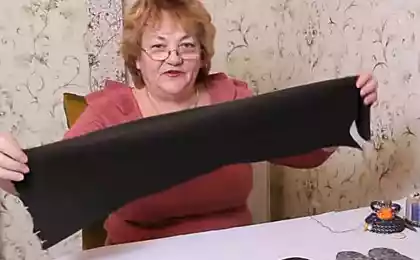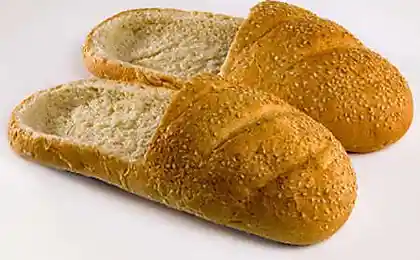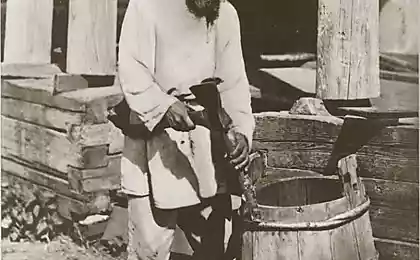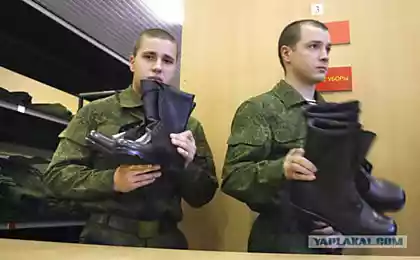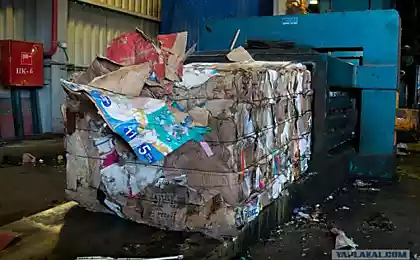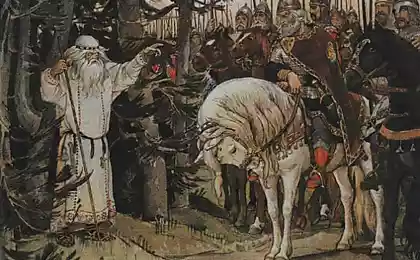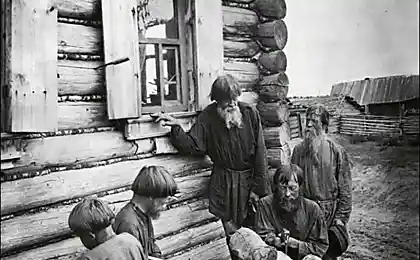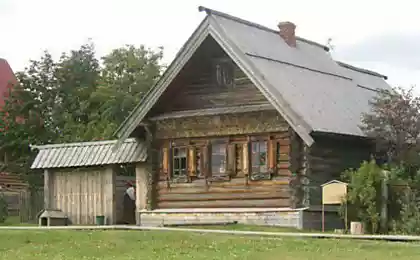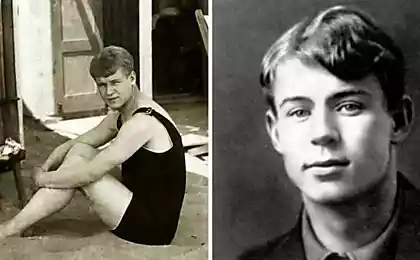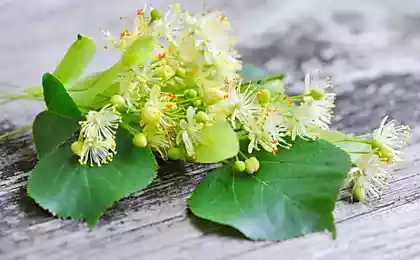786
Lapti
The simple shoes of our ancestors but what we know about her?
About 15 pictures and Bukavu.
Bast - At all times, our ancestors willingly shoes in sandals - "bast", "lychenitsy", "Lychakov", "lychnye boots" - and, despite the name, are often woven not only bark, but also from birch bark and even leather straps.

The first mention of sandals found in the "Tale of Bygone Years" (XII century). When the Holy Prince Vladimir of Kiev, popularly nicknamed the Red Sun, defeated the Bulgarians (985 a year), its governor Dobrynya inspecting wearing boots convicts (prisoners), the prince said: "These do not want to be our tribute; Come, Prince, look better Lapotnikov. " And that's true: almost to the beginning of the twentieth century Russian peasant was lapotnoy.
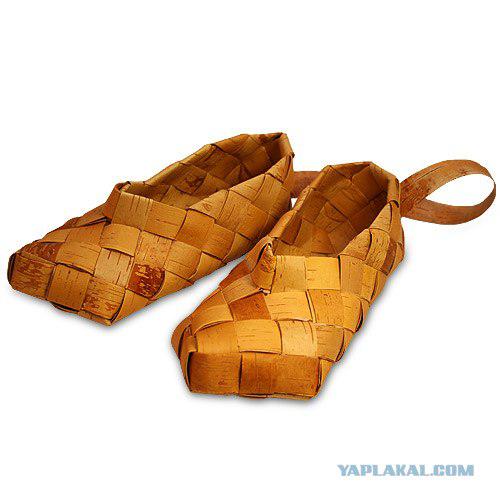
Practice and "podkovyrivanie" (suturing) bast skin. How to weave bast shoes - for example, in a cell line or a slash, with the heel or toe with - had their every tribe, and until the beginning of this century, of different areas. Thus, the ancient sandals vyatichi preferred bias binding, Novgorod Slovenia - too, but mostly of birch bark and lower flanges.

In the spring or early summer village men went into the woods to tear linden bast - at this time it can be easily removed from the trees. Bast flogged until it blossomed leaves.
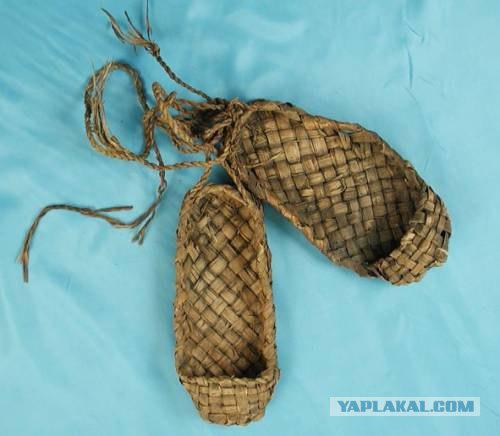
Weave bast considered light work, which men engaged literally "between times". No wonder about napivshegosya strong man and they say that he, they say, "does not bind bark", that is not able to elementary actions. But, "tying bark" man shoes provide the entire family - special workshops was not a very long time.
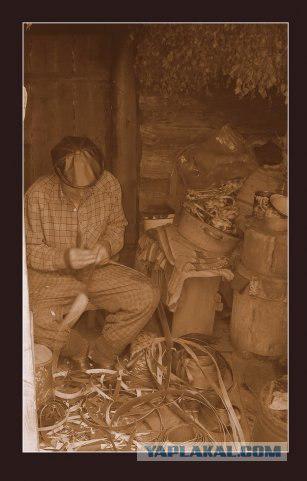
A couple of bast stripped three young (4-6 years) sticky. And I had a lot of bast - and about your everyday life, and for sale. "Good man in time wears thin in a week for at least two pairs of bast shoes" - testified before the revolution known writer and ethnographer S.Maksimov.
For many centuries unsettled lapotnogo fishing techniques. Bark soaked in warm water and then usually left in the dam to make it easier starred bark and phloem obtained.
Wove sandals on the block, using an iron (or bone) hook -
kochetykom: it is also called fid or Shvaiko
He also stripped the bark from the trees.
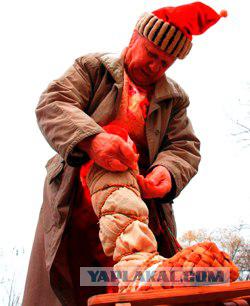
During the archaeological excavations in numerous remains of worn-out shoes, blanks and tools for weaving - Kochedykov.
Did Kochedykov from the bones (ribs of animals) or from metal. Scientists found Kochedykov made More ... in the Stone Age. About antiquity bast indicates, among other things, the following episode. Staroobryadtsy- "Kerzhaks" who lived in the Urals, in the XIX century, were not bast. But the dead were buried only in sandals.
Bast shoes were distributed not only in the eastern and western Slavs, but also some non-Slavic peoples of the forest belt - Finno-Ugric peoples and the Balts, on the part of the Germans.
Some sandals woven in five bands of bast, or lines - that were pyateriki; Woven into six lines - with six and seven - Semerikov.
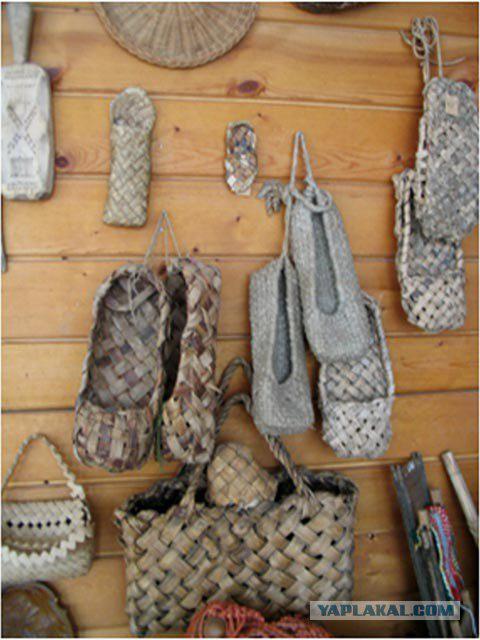
Bast shoes fastened to the foot by a long leather zavyazok- "povorozov" or rope "Equi". Ties crossed several times in the leg, prihvatyvaya leggings.
The low cost, availability, ease and hygiene of such shoes does not require proof.
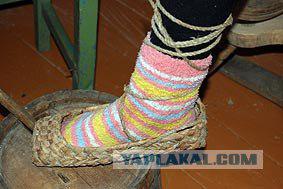
Another thing, as evidenced by the practice, sandals had a very short life. In winter, they pronashivalis ten days after the thaw - four in the summer, in the busy season - and at all three. Going on a long journey, taking with them more than one pair of spare bast. "The way to go - Five weave bast shoes" - the saying goes.
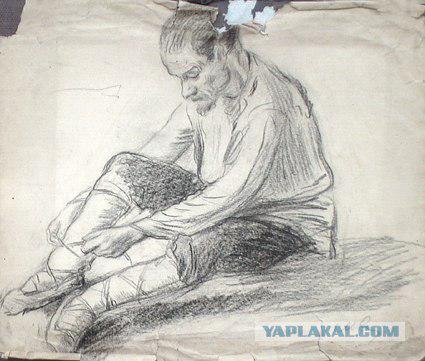
And our neighbors Swedes there was even the term "lapotnaya miles" - the distance that can be passed in one pair of bast shoes. What is needed birch bark and bast shoe to an entire people for centuries?
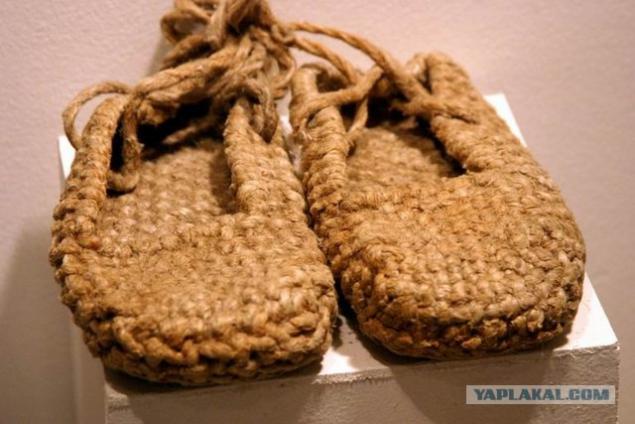
Simple calculations show that if our ancestors cut down trees for the hard crust (as, alas, did in later times), birch and linden forests would disappear back in the prehistoric era. It is difficult, however, to assume that the Gentiles, with the worship belongs to the trees, there were so dushegubski. Most likely, they held a variety of ways to take part of the cortex without ruining the wood.
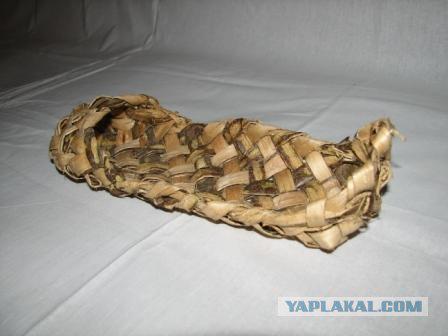
"The most dexterous workers have time to weave a day not more than five pairs of bast. Easy given sole before and obushnik (sides). But zapyatnik is given not for everyone: it reduces all Lucky and linked loops - so that threaded them Obory curve would not Lapot and labor leg to one side.
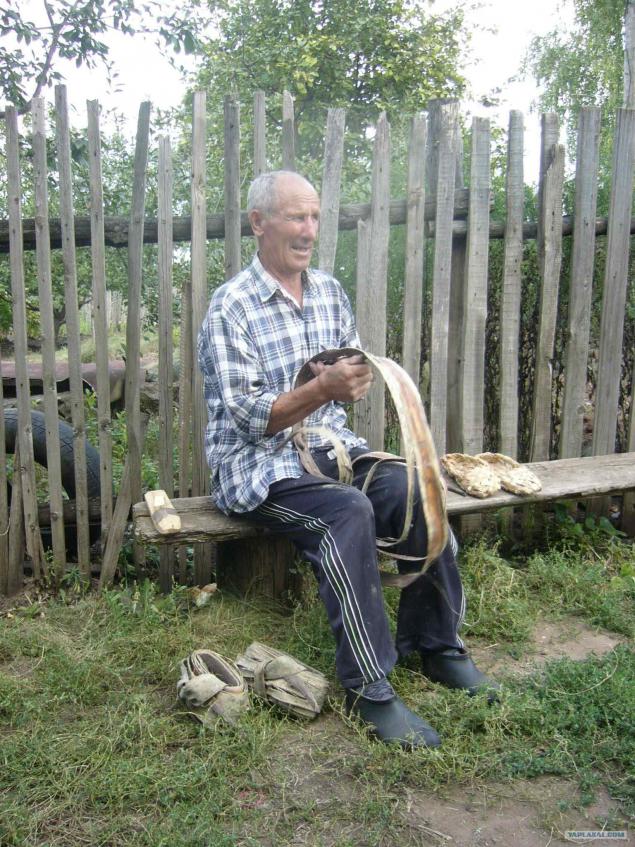
The Great bast different oblique weave bast; Belarusian and Ukrainian - direct.
Before obushnik and Russian bast shoes were tight, tight. In Belarus they practically consisted of loops Laka, which is passed in leather or hemp Obory holding sandals on his leg.
In the last century was famous for fishing lapotnym Kostroma Province, lime groves abound. They make do with many farmers, especially in the off-season.
The job involves families - things missing and old and small. The large city market carts immediately brought a hundred thousand pairs of bast.

Considered the most beautiful Vyazovye bast (bark of the elm). They are kept in hot water - then they become hard and pinker.
The holiday village moloduhi wore sandals with hand-written in front of white lime and pink Elm bark, and went on a side of the corolla of narrow strips of bast.
But most seedy bast shoes on the reputation of Russia and willow, or Koverznev - from willow bark; even weave them considered shameful. Bark tala wove shelyuzhniki and oak bark - Dubovik.
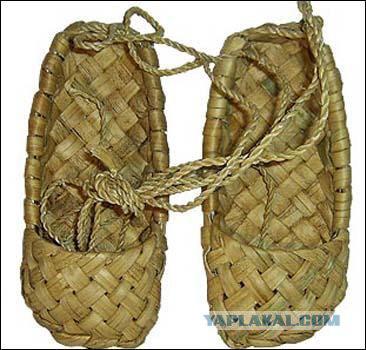
In Chernihiv bast from the bark of young oaks called dubocharami. The deal went and hemp tow and ramshackle rope; bast of them - chuni - were mostly at home or in hot dry weather. They must be of Finnish origin: Finns in Russia called "Chukhno".
We were at the bast of other names: Kurp, Crutzen and even whisperers. In areas where the bark was not, and it was expensive to buy, quirky peasants of thin shaft-woven roots; horsehair - volosyaniki. In Kursk province learned to make straw sandals. To lapotnaya footwear has stronger legs and it does not get wet and froze, her bottom "podkovyrivali" hemp rope.
Before you put on shoes, his feet wrapped in linen leg wrappings, and then wrap in cloth leggings.
To work around the house were comfortable wicker feet - similar high overshoes (galoshes, rubber, more expensive, entered the village way of life only in the early twentieth century and put them only on holidays).
Feet were left on the doorstep to quickly put on to work on the farm, especially in the spring or autumn, when the dirt yard, and sandals with foot bindings, onoochas and Machinery, wear long and troublesome.
In the not so long ago at the Russian bast shoes (as opposed to boots) were different for the right and left leg, while the peoples of the Volga - Mordovians, Chuvash and Tatars - they do not differ in the leg. Living side by side with these nations, Russian adopted a more practical shoes when to wear torn or lost a bast, the other could not throw.

For many millions of peasant folk cheaper and more practical footwear was not to find "easy to walk through the woods and, moreover, in the winter - warm and in the summer - cool." At the end of the last century, a pair of bast (podkovyrennaya tow or bast) was worth no more than 3-5 cents, and boots - "the most seductive thing for man & quot; (in the words of Mamin-Sibiryak) - a few rubles. However, sandals and wear out much faster boot: in suffering for four days, in the winter - ten days. "The way to go - five pairs of bast weave" - used to say to people. The Swedes even had the concept - "lapotnaya mile".
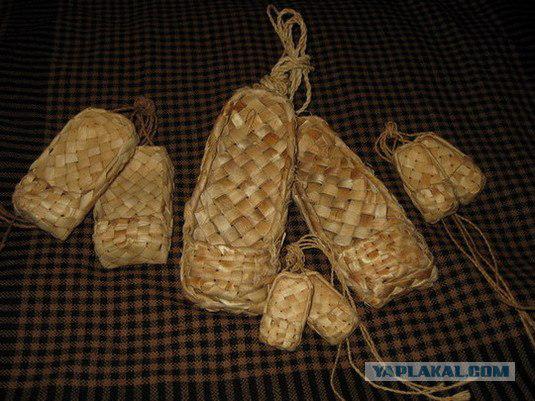
People say that the tsar Peter all knew how to do, did it all himself, and above zapyatnikom Lapot thought and tossed.
Or the whole secret of the fact that, according to the authoritative opinion of scientists, most of the people - both in cities and in rural areas - from snow to snow went mostly barefoot.
• Marry - not to wear bast.
• Lapti podkovyrkoy not worth it.
• It is - how to weave bast.
• No projectile and rounders not spletesh.
• Do not learning (not skillfully) and rounders not spletesh.
• Only bast on both legs drags and mittens and hatred.
• Boots with boot, with bast bast.
• Know Lapot shoes, and boots!
• Although in sandals, but the same PATH militia.
• And we are not at hand bast shoes.
• not try to weave bast not kicked lyk.
• As a way to go, five bast weave.
• wanders that Ivashkin bast.
• Lapti pletesh, and you are not able to bury all.
• He weaves sandals, confused.
• confused, like the porridge in bast shoes.
• pereobutsya pereobut or any of boots sandals.
• On his sandals features for weaving three years, I could not oblige.
• And a good lawsuit on sandals do not have to.
• You will become bast weave is nothing to eat.
• Bast weave odnova day there will no longer develop.
• Truth in sandals; and falsehood, even in curves, but in boots.
• One foot in sandals, the other in his boot.
• Do not servant in sandals: buy boots!
• Do not condemn in sandals, boots in a sleigh, a guest says jokingly.
• The bast calls to be idle.
• Lapti lost, from house to house looking for: it was five, and was six!
• This is not a bast weave, do not suddenly.
Here I zakonchil.Hotel comrades that would be interesting poluchilos.Sudite themselves.
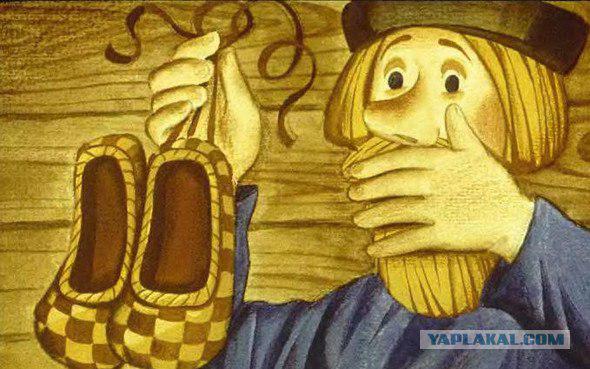
Source:
About 15 pictures and Bukavu.
Bast - At all times, our ancestors willingly shoes in sandals - "bast", "lychenitsy", "Lychakov", "lychnye boots" - and, despite the name, are often woven not only bark, but also from birch bark and even leather straps.

The first mention of sandals found in the "Tale of Bygone Years" (XII century). When the Holy Prince Vladimir of Kiev, popularly nicknamed the Red Sun, defeated the Bulgarians (985 a year), its governor Dobrynya inspecting wearing boots convicts (prisoners), the prince said: "These do not want to be our tribute; Come, Prince, look better Lapotnikov. " And that's true: almost to the beginning of the twentieth century Russian peasant was lapotnoy.

Practice and "podkovyrivanie" (suturing) bast skin. How to weave bast shoes - for example, in a cell line or a slash, with the heel or toe with - had their every tribe, and until the beginning of this century, of different areas. Thus, the ancient sandals vyatichi preferred bias binding, Novgorod Slovenia - too, but mostly of birch bark and lower flanges.

In the spring or early summer village men went into the woods to tear linden bast - at this time it can be easily removed from the trees. Bast flogged until it blossomed leaves.

Weave bast considered light work, which men engaged literally "between times". No wonder about napivshegosya strong man and they say that he, they say, "does not bind bark", that is not able to elementary actions. But, "tying bark" man shoes provide the entire family - special workshops was not a very long time.

A couple of bast stripped three young (4-6 years) sticky. And I had a lot of bast - and about your everyday life, and for sale. "Good man in time wears thin in a week for at least two pairs of bast shoes" - testified before the revolution known writer and ethnographer S.Maksimov.
For many centuries unsettled lapotnogo fishing techniques. Bark soaked in warm water and then usually left in the dam to make it easier starred bark and phloem obtained.
Wove sandals on the block, using an iron (or bone) hook -
kochetykom: it is also called fid or Shvaiko
He also stripped the bark from the trees.

During the archaeological excavations in numerous remains of worn-out shoes, blanks and tools for weaving - Kochedykov.
Did Kochedykov from the bones (ribs of animals) or from metal. Scientists found Kochedykov made More ... in the Stone Age. About antiquity bast indicates, among other things, the following episode. Staroobryadtsy- "Kerzhaks" who lived in the Urals, in the XIX century, were not bast. But the dead were buried only in sandals.
Bast shoes were distributed not only in the eastern and western Slavs, but also some non-Slavic peoples of the forest belt - Finno-Ugric peoples and the Balts, on the part of the Germans.
Some sandals woven in five bands of bast, or lines - that were pyateriki; Woven into six lines - with six and seven - Semerikov.

Bast shoes fastened to the foot by a long leather zavyazok- "povorozov" or rope "Equi". Ties crossed several times in the leg, prihvatyvaya leggings.
The low cost, availability, ease and hygiene of such shoes does not require proof.

Another thing, as evidenced by the practice, sandals had a very short life. In winter, they pronashivalis ten days after the thaw - four in the summer, in the busy season - and at all three. Going on a long journey, taking with them more than one pair of spare bast. "The way to go - Five weave bast shoes" - the saying goes.

And our neighbors Swedes there was even the term "lapotnaya miles" - the distance that can be passed in one pair of bast shoes. What is needed birch bark and bast shoe to an entire people for centuries?

Simple calculations show that if our ancestors cut down trees for the hard crust (as, alas, did in later times), birch and linden forests would disappear back in the prehistoric era. It is difficult, however, to assume that the Gentiles, with the worship belongs to the trees, there were so dushegubski. Most likely, they held a variety of ways to take part of the cortex without ruining the wood.

"The most dexterous workers have time to weave a day not more than five pairs of bast. Easy given sole before and obushnik (sides). But zapyatnik is given not for everyone: it reduces all Lucky and linked loops - so that threaded them Obory curve would not Lapot and labor leg to one side.

The Great bast different oblique weave bast; Belarusian and Ukrainian - direct.
Before obushnik and Russian bast shoes were tight, tight. In Belarus they practically consisted of loops Laka, which is passed in leather or hemp Obory holding sandals on his leg.
In the last century was famous for fishing lapotnym Kostroma Province, lime groves abound. They make do with many farmers, especially in the off-season.
The job involves families - things missing and old and small. The large city market carts immediately brought a hundred thousand pairs of bast.

Considered the most beautiful Vyazovye bast (bark of the elm). They are kept in hot water - then they become hard and pinker.
The holiday village moloduhi wore sandals with hand-written in front of white lime and pink Elm bark, and went on a side of the corolla of narrow strips of bast.
But most seedy bast shoes on the reputation of Russia and willow, or Koverznev - from willow bark; even weave them considered shameful. Bark tala wove shelyuzhniki and oak bark - Dubovik.

In Chernihiv bast from the bark of young oaks called dubocharami. The deal went and hemp tow and ramshackle rope; bast of them - chuni - were mostly at home or in hot dry weather. They must be of Finnish origin: Finns in Russia called "Chukhno".
We were at the bast of other names: Kurp, Crutzen and even whisperers. In areas where the bark was not, and it was expensive to buy, quirky peasants of thin shaft-woven roots; horsehair - volosyaniki. In Kursk province learned to make straw sandals. To lapotnaya footwear has stronger legs and it does not get wet and froze, her bottom "podkovyrivali" hemp rope.
Before you put on shoes, his feet wrapped in linen leg wrappings, and then wrap in cloth leggings.
To work around the house were comfortable wicker feet - similar high overshoes (galoshes, rubber, more expensive, entered the village way of life only in the early twentieth century and put them only on holidays).
Feet were left on the doorstep to quickly put on to work on the farm, especially in the spring or autumn, when the dirt yard, and sandals with foot bindings, onoochas and Machinery, wear long and troublesome.
In the not so long ago at the Russian bast shoes (as opposed to boots) were different for the right and left leg, while the peoples of the Volga - Mordovians, Chuvash and Tatars - they do not differ in the leg. Living side by side with these nations, Russian adopted a more practical shoes when to wear torn or lost a bast, the other could not throw.

For many millions of peasant folk cheaper and more practical footwear was not to find "easy to walk through the woods and, moreover, in the winter - warm and in the summer - cool." At the end of the last century, a pair of bast (podkovyrennaya tow or bast) was worth no more than 3-5 cents, and boots - "the most seductive thing for man & quot; (in the words of Mamin-Sibiryak) - a few rubles. However, sandals and wear out much faster boot: in suffering for four days, in the winter - ten days. "The way to go - five pairs of bast weave" - used to say to people. The Swedes even had the concept - "lapotnaya mile".

People say that the tsar Peter all knew how to do, did it all himself, and above zapyatnikom Lapot thought and tossed.
Or the whole secret of the fact that, according to the authoritative opinion of scientists, most of the people - both in cities and in rural areas - from snow to snow went mostly barefoot.
• Marry - not to wear bast.
• Lapti podkovyrkoy not worth it.
• It is - how to weave bast.
• No projectile and rounders not spletesh.
• Do not learning (not skillfully) and rounders not spletesh.
• Only bast on both legs drags and mittens and hatred.
• Boots with boot, with bast bast.
• Know Lapot shoes, and boots!
• Although in sandals, but the same PATH militia.
• And we are not at hand bast shoes.
• not try to weave bast not kicked lyk.
• As a way to go, five bast weave.
• wanders that Ivashkin bast.
• Lapti pletesh, and you are not able to bury all.
• He weaves sandals, confused.
• confused, like the porridge in bast shoes.
• pereobutsya pereobut or any of boots sandals.
• On his sandals features for weaving three years, I could not oblige.
• And a good lawsuit on sandals do not have to.
• You will become bast weave is nothing to eat.
• Bast weave odnova day there will no longer develop.
• Truth in sandals; and falsehood, even in curves, but in boots.
• One foot in sandals, the other in his boot.
• Do not servant in sandals: buy boots!
• Do not condemn in sandals, boots in a sleigh, a guest says jokingly.
• The bast calls to be idle.
• Lapti lost, from house to house looking for: it was five, and was six!
• This is not a bast weave, do not suddenly.
Here I zakonchil.Hotel comrades that would be interesting poluchilos.Sudite themselves.

Source:

